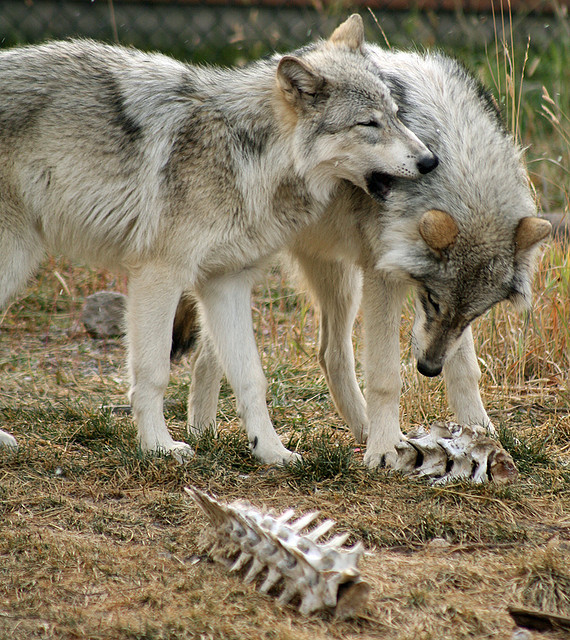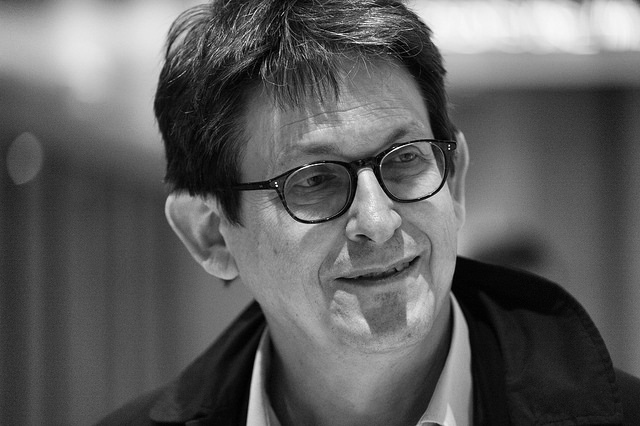Beyond the Headlines
Air Date: Week of March 20, 2015

In this week’s trip beyond the headlines, Peter Dykstra tells host Steve Curwood about a global flatline in carbon emissions for 2014, increases in climate coverage by the media, and how beavers have flourished since the reintroduction of wolves to Yellowstone.
Transcript
CURWOOD: It's Living on Earth. I'm Steve Curwood. Time to head off to Conyers Georgia to check out the week beyond the headlines. Peter Dykstra with Environmental Health News, ehn dot org and the DailyClimate dot org, has been delving into that world, and he’s on the line now. Hi there, Peter.
DYKSTRA: Well, hi, Steve, are you ready for a little good news? Spring’s starting, so we’re going to let hope spring eternally, at least just a little.
CURWOOD: Well, we’re always up for that, particularly after the record-breaking snows here in Boston.
DYKSTRA: Year after year, the amount of carbon we throw into the atmosphere tends to mirror the state of the global economy. Economic downturn, fewer carbon emissions. Economic boom times, carbon goes boom too, accelerating climate change impacts. But according to the International Energy Agency, in 2014 global carbon emissions flat-lined – pretty much the same as 2013, while the economy grew by three percent worldwide.
CURWOOD: Hmmm, so that flies against the conventional wisdom that some people hold, that you can’t protect the climate and grow the economy at the same time. What do you think is happening to cause this?
DYKSTRA: Well, a lot of things, Steve. Renewables like wind and solar still face some challenges, but the longtime predictions for a breakthrough seems finally to be arriving. And energy efficiency is scoring big, quiet victories in both industrialized and developing nations. One year of flatlining does not a trend or a solution make, but it’s a promising step.
CURWOOD: So, fingers crossed.
DYKSTRA: Exactly. On top of a little good news for carbon, I’m seeing good news … from the news. A couple of organizations with global influence are wide-awake on climate change – the Guardian, and the Washington Post. Over in the UK, the longtime editor of the Guardian, Alan Rusbridger, is about to step down, and that of course is time to think about one’s legacy. Rusbridger says he didn’t want to leave without seeing the Guardian go all-out to cover climate change.
CURWOOD: But hasn’t the Guardian always paid a lot of attention to climate and the environment?

In advance of his upcoming departure from the Guardian, longtime editor Alan Rusbridger is directing the publication to treat climate change as the most important story of our time. (Photo: International Journalism Festival; Flickr CC BY-SA 2.0)
DYKSTRA: They have, but this is different. Alan Rusbridger says that climate is the most important story of our time, and for once, his newspaper - and website — are covering it like it is.
CURWOOD: And what about the Washington Post?
DYKSTRA: Y’know, I lived in Washington for 12 years and the Post was my hometown newspaper and it had a reputation for being very provincial about the Federal government. If you were an environment reporter, you didn’t cover the environment, you covered the EPA. But recently, the Post, under new ownership and new editors, is treating the world like it’s even bigger and rounder than the Capitol Beltway. A new energy and environment page on the website, and a strong, expanded team reporting globally on energy and environment. Even if newspapers are in decline, other news organizations still take their cues from big guys like the Post and the New York Times, and maybe the biggest cue of all came a couple of years ago, when the Post elevated a veteran environment writer, Juliet Eilperin, to the prestigious White House beat, suggesting that covering the environment isn’t a dead-end punishment for up-and-coming journalists.
CURWOOD: Well, some of us seem to enjoy that dead-end punishment, like you and me. And, you know, I've always thought climate was the biggest story – still is. Hey, what do you have from the history file this week?
DYKSTRA: Steve, 20 years ago this week, gray wolves were re-introduced to Yellowstone National Park in what has been described ever since as a classic success story of restoring an ecosystem. In some places, hunters and ranchers don’t like wolves because they can prey on game animals or livestock. But you know what animal likes wolves?
CURWOOD: Uh, let’s see, I’d say “other wolves” but that’s probably not the right answer.
DYKSTRA: No. Beavers.
CURWOOD: Beavers?
DYKSTRA: Beavers. In a place like the protected ecosystem of Yellowstone, wildlife experts say it works like this: wolves are a key predator to elk. No wolves in Yellowstone, the elk thrive, and when they thrive, they eat a lot of waterside vegetation including young willow and cottonwood trees. Beavers also like willow and cottonwood, but the elk outcompete the beavers. Add wolves back into the mix, there are fewer elk, so what do they do with all that surplus vegetation?
CURWOOD: They leave it to beavers.
DYKSTRA: Exactly. So 20 years later, wolves are thriving, elk are in balance, and beavers have come back too. Outside of Yellowstone, where there’s a thriving human population and a commercial stake in elk hunting, wolves aren’t widely popular. The state of Idaho just wrapped up a population control hunt in which nineteen wolves were shot from helicopters, and the legislature just approved $400,000 to do it again in 2016.
CURWOOD: Gee, Peter, after all that hope, thanks for leaving us on a low note. Peter Dykstra is with Environmental Health News – that’s EHN.org – and the Daily Climate.org. Thanks so much, talk to you soon.
DYKSTRA: All right, Steve, thanks, we’ll talk to you soon.
CURWOOD: And there’s more on these stories at our website, LOE dot org.
Links
‘Find a new way to tell the story’ – how the Guardian launched its climate change campaign
The Washington Post’s Energy and Environment section
Wolves at Yellowstone National Park
Living on Earth wants to hear from you!
Living on Earth
62 Calef Highway, Suite 212
Lee, NH 03861
Telephone: 617-287-4121
E-mail: comments@loe.org
Newsletter [Click here]
Donate to Living on Earth!
Living on Earth is an independent media program and relies entirely on contributions from listeners and institutions supporting public service. Please donate now to preserve an independent environmental voice.
NewsletterLiving on Earth offers a weekly delivery of the show's rundown to your mailbox. Sign up for our newsletter today!
 Sailors For The Sea: Be the change you want to sea.
Sailors For The Sea: Be the change you want to sea.
 The Grantham Foundation for the Protection of the Environment: Committed to protecting and improving the health of the global environment.
The Grantham Foundation for the Protection of the Environment: Committed to protecting and improving the health of the global environment.
 Contribute to Living on Earth and receive, as our gift to you, an archival print of one of Mark Seth Lender's extraordinary wildlife photographs. Follow the link to see Mark's current collection of photographs.
Contribute to Living on Earth and receive, as our gift to you, an archival print of one of Mark Seth Lender's extraordinary wildlife photographs. Follow the link to see Mark's current collection of photographs.
 Buy a signed copy of Mark Seth Lender's book Smeagull the Seagull & support Living on Earth
Buy a signed copy of Mark Seth Lender's book Smeagull the Seagull & support Living on Earth

